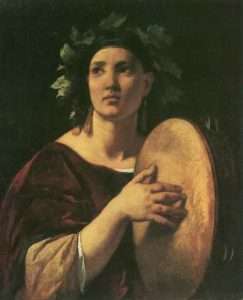Mezzo-soprano female voice. How to identify it when teaching vocal skills
The mezzo-soprano voice is rarely found in nature, but it has a very beautiful, rich and velvety sound. Finding a singer with such a voice is a great success for a teacher; this voice is widely used on the opera stage and in various types of music.
It’s easier for a mezzo-soprano with a beautiful timbre to enroll in music schools, and later find a job in the opera house, because
In the Italian school, this is the name given to a voice that opens a third below the dramatic soprano. Translated into Russian, “mezzo-soprano” means “a little soprano.” It has a beautiful velvety sound and reveals itself not in the top notes, but in the middle part of the range, from A of the small octave to A of the second.
When singing higher notes, the rich, juicy timbre of the mezzo-soprano loses its characteristic coloring, becomes dull, harsh and colorless, in contrast to sopranos, whose voice begins to open up on the upper notes, acquiring a beautiful head sound. Although in the history of music there are examples of mezzos who could not lose their beautiful timbre even on the top notes and easily sang soprano parts. In the Italian school, a mezzo can sound like a lyric-dramatic or dramatic soprano, but in range it is approximately a third lower than these voices.
In the Russian opera school, this voice is distinguished by a rich and rich timbre, sometimes reminiscent of a contralto – the lowest voice in women that can sing tenor roles. Therefore, a mezzo-soprano with an insufficiently deep and expressive timbre is classified as a soprano, which often poses many difficulties for this voice. Therefore, many girls with such voices go into pop and jazz, where they can sing in a tessitura that is convenient for them. The formed mezzo-soprano can be divided into lyric (close to soprano) and dramatic.
In the choir, lyric mezzo-sopranos sing the part of the first altos, and dramatic ones sing the part of the second along with the contralto. In the folk choir they perform alto roles, and in pop and jazz music the mezzo-soprano is valued for its beautiful timbre and expressive low notes. By the way, many modern performers on the foreign stage are distinguished by a characteristic mezzo-soprano timbre despite a different sound presentation.
- The soprano in this part of the range only gains the beauty and expressiveness of her voice (approximately from G of the first octave to F of the second).
- Sometimes on notes such as A and G of a small octave, the soprano loses the expressiveness of her voice and these notes almost do not sound.
This voice causes controversy among teachers more than others, because it is very difficult to identify it in children and adolescents. Therefore, girls with undeveloped voices in the choir are placed in the second and even in the first soprano, which presents great difficulties for them and can generally discourage interest in classes. Sometimes high children’s voices after adolescence acquire a characteristic mezzo-soprano sound, but more often mezzo-sopranos are obtained from altos. . But even here teachers can make mistakes.
The fact is that not all mezzo-sopranos have a bright and expressive velvety timbre, like opera singers. They often sound beautiful, but not bright in the first octave and after it only because their timbre is not as strong and expressive as that of world-famous celebrities. Operatic voices with such a timbre are rarely found in nature, so girls who do not meet operatic requirements are automatically classified as sopranos. But in reality, their voice is simply not expressive enough for opera. In this case, range, not timbre, will be decisive. This is why mezzo-soprano is difficult to identify the first time.
In children under 10 years of age, one can already assume further development of the mezzo-soprano based on the chest timbre and undeveloped upper register of the voice. Sometimes, closer to adolescence, the pitch and expressiveness of the voice begins to decrease and at the same time the chest register of the voice expands. But the exact result will be visible after 14 or 16 years, and sometimes even later.
The mezzo-soprano is in demand not only in opera. In folk singing, jazz and pop music, there are many singers with such a voice, the timbre and range of which allow women to find worthy use. Of course, it is more difficult to determine the scope of a pop singer’s voice and the tones available to it, but the timbre can reveal the character of the voice.
The most famous opera singers with such a voice are those who have a rare type of this voice – coloratura mezzo-soprano, and many others.
Among the people’s artists of our country with a mezzo-soprano voice can be named. Despite singing in a folk style, the mezzo-soprano produces a velvety timbre and coloring of her voice.
https://www.youtube.com/watch?v=a2C8UC3dP04
Mezzo-soprano pop singers are distinguished by their deep, chesty voice. The color of this voice is clearly audible in such singers as


Watch this video on YouTube
https://www.youtube.com/watch?v=Qd49HizGjx4



